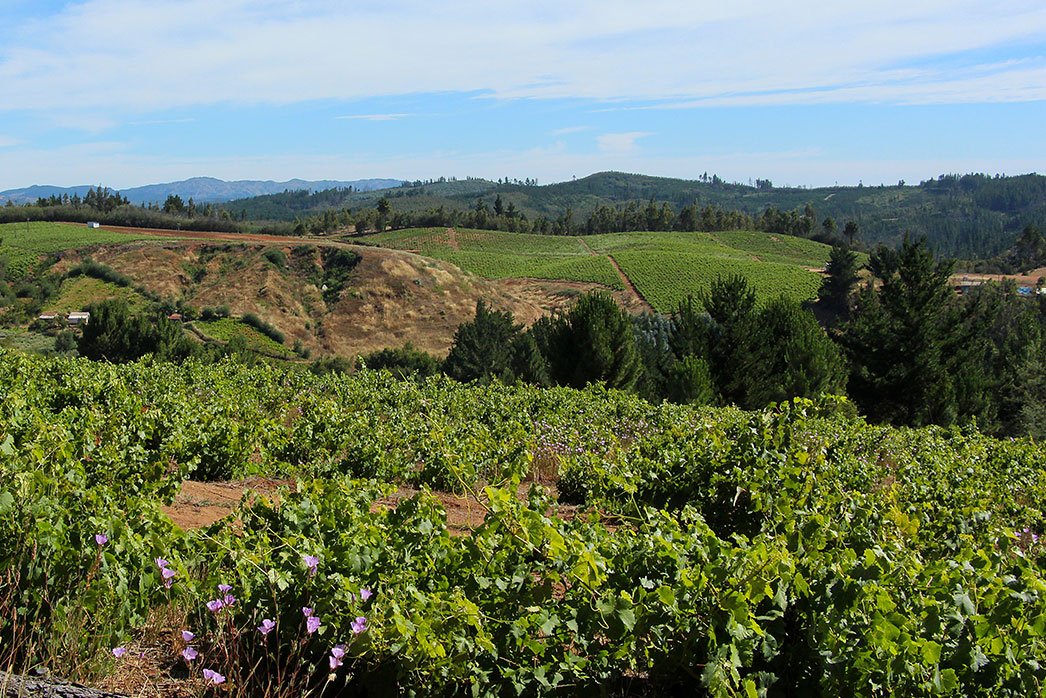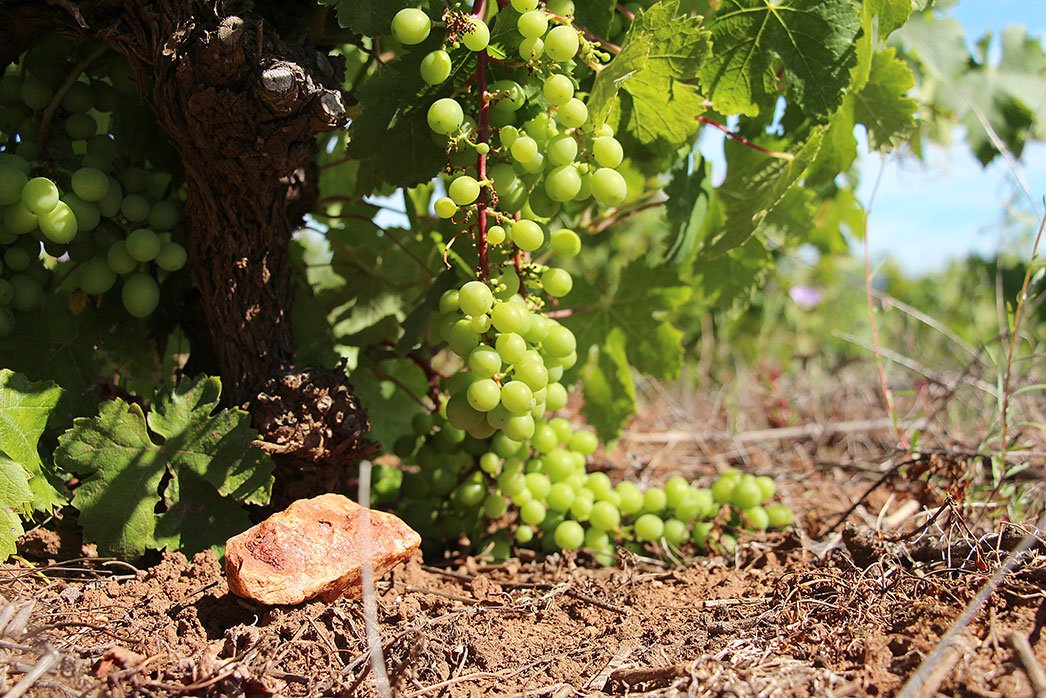
On our way back down to Leo’s improvised shelter, Andrea and I debated if we had time to taste Leo’s wines because we had to drive back to Santiago. It was past five and what would normally take five hours to drive in any normal car would take us seven. We knew we’d have to take it easy out of fear that our tiny little red car might fly apart merely by going the speed limit. Pedro mentioned that he had to go as well, and that we had just a few minutes if we wanted to quickly taste Leo’s wines.
The wind maintained its intense howl and Leo took a seat with a cooler full of wine. Dirk, Jorge and Jorge’s group sat down and made themselves comfortable as they readied themselves to size up Leo’s new vintage for import. Leo pulled out a bottle of white wine and offered us a taste.
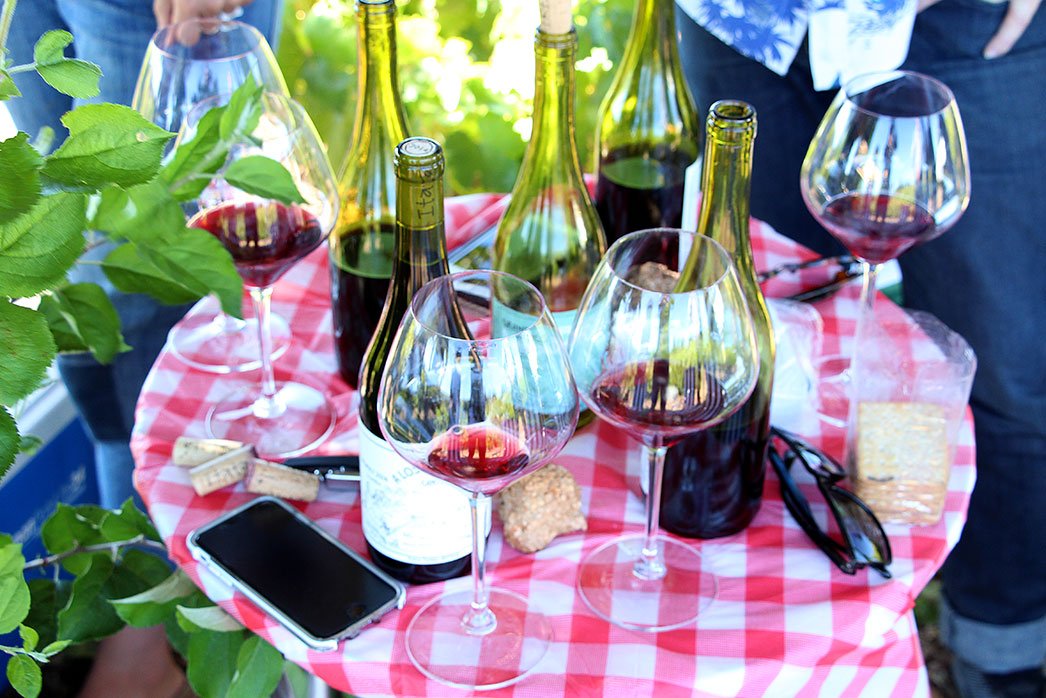
With my mind already in the car, counting the hours driving back to Santiago, I stuck my nose in the glass. The Pacific Ocean winds did their best to whisk the aromas of Leo’s white wine out of the glass and back into the Itata, but the strong will of the wine resisted. High-toned, but delicate ocean spray, baking spices, exotic white fruits and citrus flowers gently fluttered out of the glass like a kaleidoscope of baby butterflies. The aroma was beautiful and charming.
My eyes now wide open, I stared at Andrea with a look of surprise; she and I had labored through so many bottles of mediocre whites from this country over the last nine years, and this immediately seemed liked something very different. We took our first tastes at the same moment.
The white, Pipeño (named after the old wooden 8000 liter traditional aging vessel shaped like a pipe), was authentic and complex. Made of 90% Moscatel and 10% Semillion, it was ornate and unapologetically delicious, even to an importer like me, who mostly opts for racy, high octane mineral bombs from Europe’s best spots for Riesling, Chenin Blanc and Chardonnay. It was salty, finely textured and familiar, but it wasn’t the grapes that brought familiarity… it was the influence of its granitic mother.
The white, Pipeño (named after the old wooden 8000 liter traditional aging vessel shaped like a pipe), was authentic and complex.
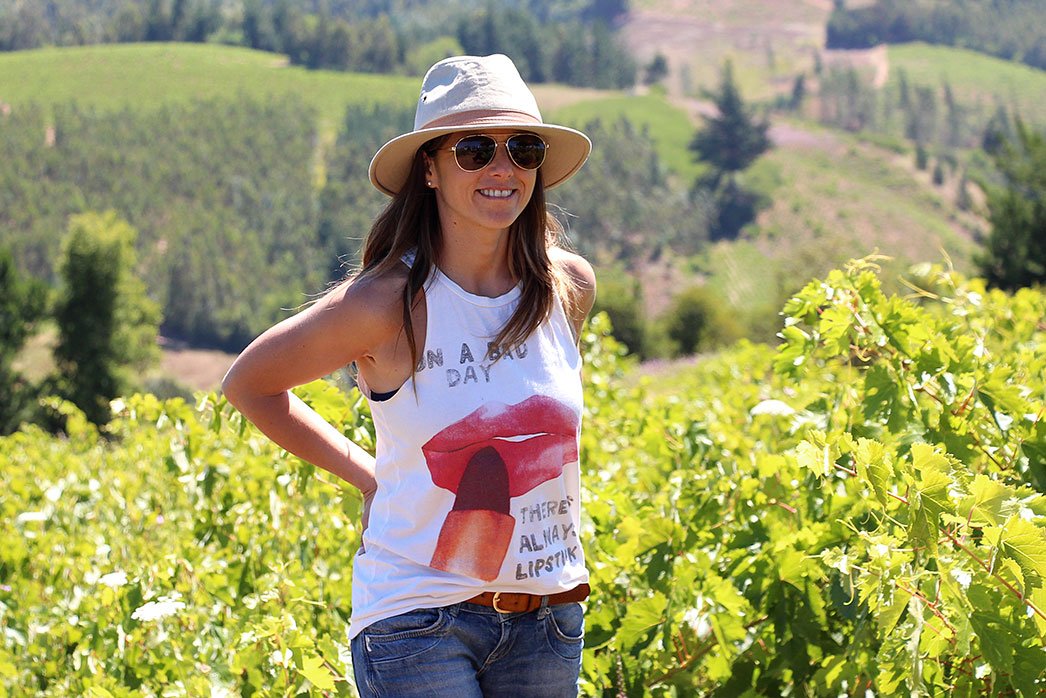
Half smiling and unsure, Andrea glanced at me, as if for permission to put her cards on the table. I knew she liked the wine (as did I!), but she knew it could be a mistake to say out loud so soon if the rest of the wines weren’t as good; believe me, we didn’t expect them to be. Our eyes were locked, keeping our secret alive going into the next set of wines made from Pais.
Pais makes a rugged and tough wine. Louis Antoine, a displaced Frenchman living in Chile, helped take the grape to notoriety in the States by making it in a Beaujolais style, with carbonic and semi-carbonic fermentations. He had worked in the cellar with one of France’s greatest vignerons, the late Marcel Lapierre, and made a name for himself in the “natural wine movement.” He’s now the best known producer from that genre in Chile.
We had tasted in Louis’ cellar the previous day, and he had shown us some Pais made in a more traditional way (no carbonic method). The wines were interesting, albeit unfinished and straight out of tanks. They were massively tannic, and Louis made it clear he knew they needed more time to soften before going into bottle.
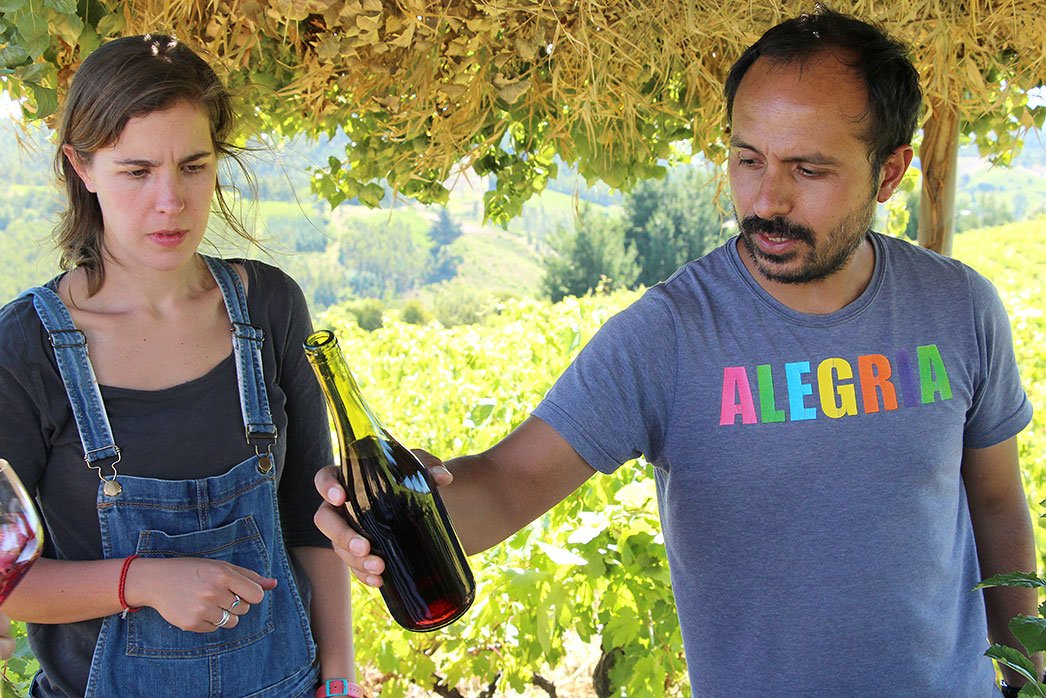
Leo pulled two Pais wines out of his cooler. The labels were very charming and had sketches we later learned were done by Leo, alluding to the history of the Spanish Conquistadors and their cultivation of the Itata. Both wines were labeled Pais and were separated by their soil types, “Volcanico” and “Granitico,” in red letters.
Both wines were labeled Pais and were separated by their soil types, “Volcanico” and “Granitico,” in red letters.
The first red in my glass was Pais grown on volcanic soil. The color was as light as you’d ever see for a red. A seductive and unusually elegant wine greeted my nose. Again, the intensity of the wind blew most of the aromas out, making it difficult to catch its subtleties. I stuck my nose further into the glass to confirm that I was smelling and tasting a wine like no other I’d ever had from Chile.
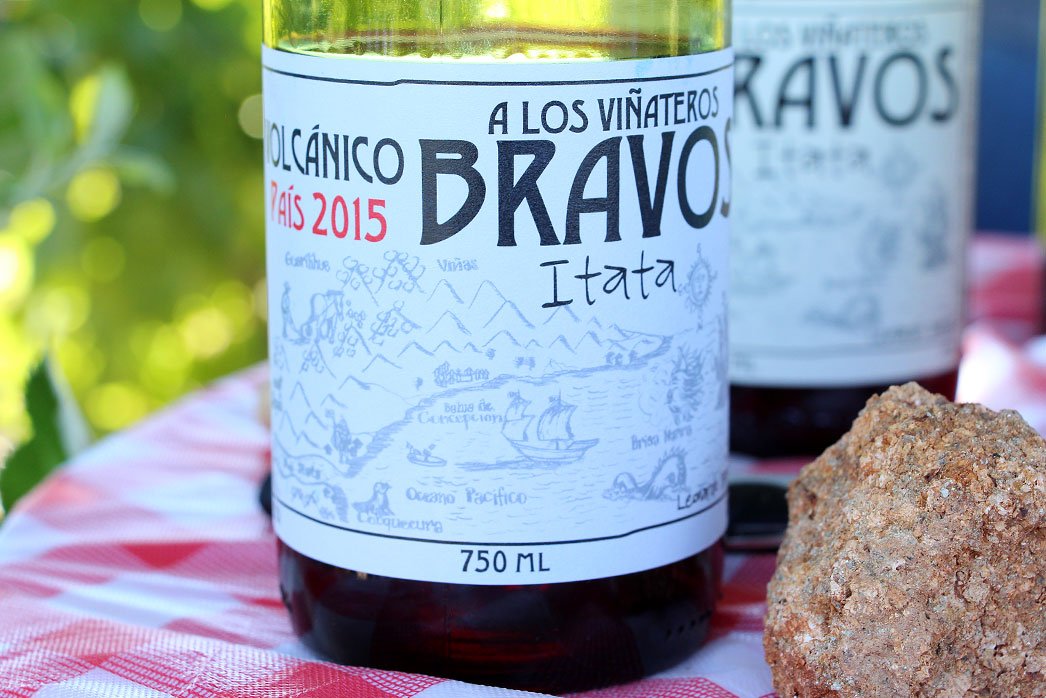
The next wine was the Granitico Pais. It carried a slightly deeper hue of red and worked forcefully against the wind compared to the last wine. More powerful, but equally elegant as the volcanic Pais, the nose and taste were unmistakably marked by the soils we had just seen. Blood, metal, mineral, coarse salt, orange and dark red roses, and deep, but supremely elegant red and black fruits filled out my mouth, leaving me a little stunned. Again, the familiarity and impact of the granite soil was clear. I was impressed, but still couldn’t help second guessing myself with these first three wines.
My wife looked at me, still waiting for a cue, and I shrugged my shoulders and said, “who knew?!”
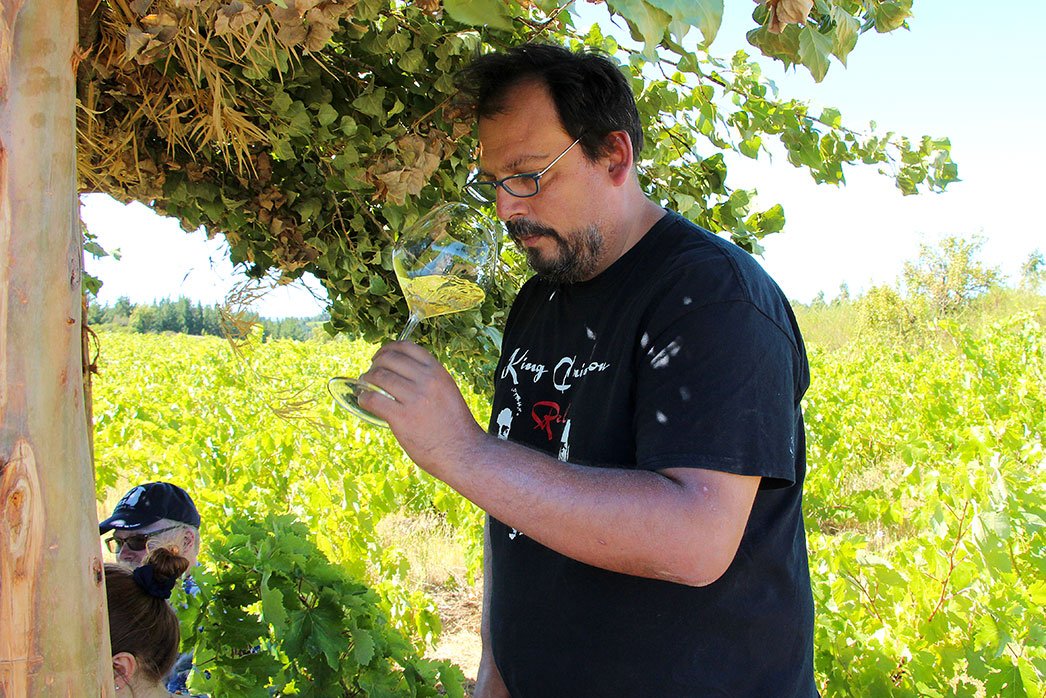
I walked over to Pedro, who was patiently waiting for us. I was excited about Leo’s wines but I wasn’t sure what to do. Here was the guy I came down to see and then I met this other guy, Leo, who was equally impressive and making wines that were very different than Pedro’s remarkably intense and authentic wines. I looked at Pedro and cautiously said, “I am a little surprised by Leo’s wines. I think I need to import them as well.” Pedro smiled. With his arms crossed, he looked over the rim of his glasses and said, “They are beautiful wines aren’t they? You should import them. We work together and it would be good for our region if you would represent both of us.”
I looked at Pedro and cautiously said, “I am a little surprised by Leo’s wines. I think I need to import them as well.”
Pedro and Leo embody the best of their country. As guardians of Chile’s nearly forgotten legacy, they are championing the Itata’s important history and the families who have cultivated these lands for centuries. The ancient families of the Itata face a modern world where big business moves faster in two years than these farmers have in the last one hundred. Luckily Pedro Parra, their most faithful advocate, is the voice for their inevitable rise to the top of Chile’s wine culture.
The ancient families of the Itata face a modern world where big business moves faster in two years than these farmers have in the last one hundred.
As we left the Itata and joined the Ruta 5 north, back to Santiago, Andrea and I were glowing with excitement. In the past, taking a trip there during the southern hemisphere’s summertime was about momentarily getting away from our regular routines and the short winter days in California. We used to go for Chile’s beautiful and rugged beaches, endless supply of delicious seafood (especially sea urchin!) and perfectly ripe, in-season fruits and vegetables. We’ll still go for these things, but in less than two days we experienced a new Chile and started making plans to return much sooner than expected. We felt like we had just scratched the surface in the south and got a tiny glimpse into the Chile we’d been searching for.
